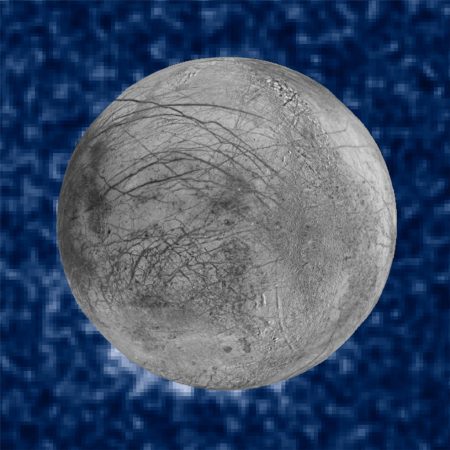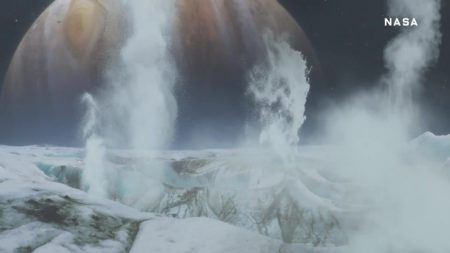September 27, 2016 – It’s my daughter’s birthday today and before I get started I want to wish her all the best on this the day she came into the world. She changed our lives forever in a thousand ways and my wife and I are thankful for all of them. So have a happy and healthy one today Jackie.
Now to the business at hand. In the movie, 2001: A Space Odyssey, based on an Arthur C. Clarke science fiction novel, the words appearing in this posting’s title are quoted near the film’s end. How Clarke could guess that Europa might be the likeliest place to find life in the Solar System other than here on Earth remains a mystery to me. The technology to glean such information from Earth-based observation was insufficient to draw such conclusions. So yesterday when NASA announced findings from pictures and video images taken by the Hubble Space Telescope of Jupiter’s moon, you had to expect that the media would pull out Clarke’s novel and quote those words.
What did NASA share with us?
Strong evidence of the existence of water vapour erupting from Europa’s surface. States Geoff Yoder, Acting Associate Administrator for NASA’s Science Mission Directorate, “Europa’s ocean is considered to be one of the most promising places that could potentially harbor life in the solar system.”
What ocean is he talking about?
Europa is covered by an icy crust under which astronomers have suspected the existence of an ocean of salty water greater in volume than all the oceans here on Earth. And where Jupiter’s gravitational pull causes fissures to occur in the icy Europan crust, water appears to be escaping to the surface.
Observations by a team from the Space Telescope Sciences Institute (STSci) in Baltimore announced they have observed plumes of water rising 200 kilometers (125 miles) above the moon’s surface.
How could they see these plumes?
States William Sparks of STSci “The atmosphere of an extrasolar planet blocks some of the starlight that is behind it….if there is a thin atmosphere around Europa, it has the potential to block some of the light of Jupiter, and we could see it as a silhouette. And so were were looking for absorption features around the limb of Europa as it transited the smooth face of Jupiter.”
What does this all mean?
Over 15 months on 10 separate occasions scientists at STSci observed 3 incidents of plume eruptions (see the image below and note the suspected plumes in the bottom part of the picture).
These new observations confirm those made in 2012 by the Southwest Research Institute in San Antonio, which detected water vapour eruptions in Europa’s south polar region. Those eruptions were estimated to reach 160 kilometers (100 miles) in height.
The latest results will be published in the September 29th issue of the Astrophysical Journal.

When the James Webb Space Telescope is launched in 2018, one of its immediate tasks will be to confirm the Hubble’s observations. But NASA scientists are seemingly convinced that the discovery of water vapour plumes justifies seeking funding for an orbital mission to Europa in the 2020s to observe the moon close up. No landing is planned and not because of Arthur C. Clarke’s prescient words, but because the orbital mission should be able to sample the ocean by flying through the plumes. What it may find could tell us that indeed, we are not the only place in the Universe where life exists.









